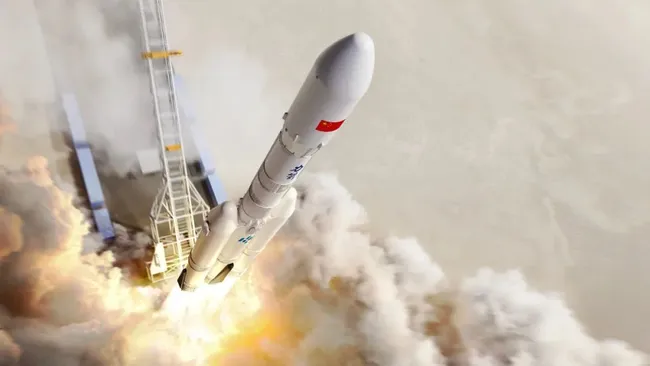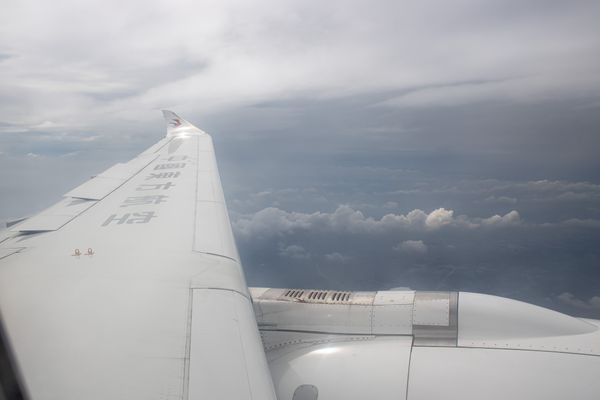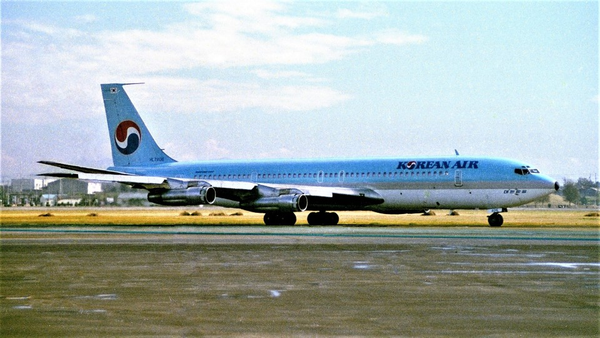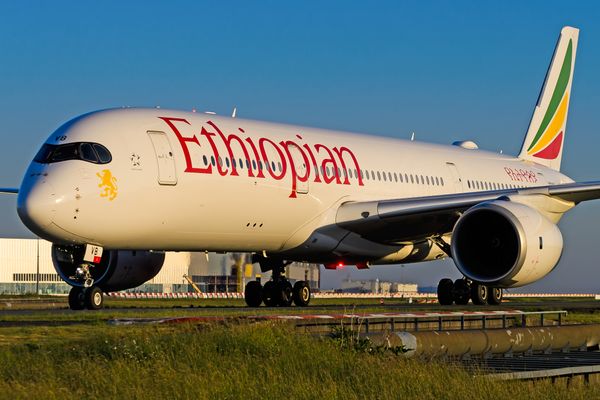China is developing its aerospace industry to establish itself as a global leader in the aviation and space industries. In 2015, Chinese President Xi Jinping established Made in China 2025: a ten-year plan to strengthen the Chinese economy by rapidly developing ten sectors. With Made in China 2025, China aims to reduce its dependence on foreign technology and export Chinese products to global markets. Xi Jinping is still committed to achieving his goals despite a slowing Chinese economy and a struggling real estate sector.

China's Aviation and Space Industries
Aerospace is one of the ten sectors in Made in China 2025. China has already progressed in this area by developing its own commercial aircraft and sending astronauts to space. The COMAC C919 has completed multiple domestic flights, and China Eastern Airlines has incorporated the C919 into its fleet. Airbus, Boeing, and Chinese aviation authorities anticipate China becoming the world's largest aviation market within the next two decades. This scenario could also become a reality by producing Chinese aircraft after China Eastern Airlines ordered 100 C919 aircraft in September.

In the space industry, Xi Jinping has outlined a goal of becoming the world's largest space power by 2045. China has made significant strides towards achieving its "eternal dream" recently. These accomplishments include sending people to the Tiangong space station, sending the Zhurong rover to Mars, and landing the Chang'e-4 rover on the far side of the Moon. China has even outlined plans to build its own version of Elon Musk's Starlink by using 26,000 satellites to cover the entire world. A new space race is happening as Western and other Asian countries compete against China to stay ahead in the industry.
CAS Space
Guangzhou Zhongke Aerospace Exploration Technology Co., Ltd. (CAS Space) is one company contributing to China's aerospace ambitions. The company plans to launch its Kinetica-2 liquid propellant rocket in August 2025. CAS Space has already witnessed success through its Kinetica-1 (Lijian-1) rocket, which carried 26 satellites to orbit when it launched in June 2023.
CAS Space's new rocket will be significantly larger than its previous model. Lijian-1 is 98 feet (30 meters) tall and can carry 400,000 pounds (181,437 kilograms) of thrust at takeoff. Meanwhile, Kinetica-2 will be 174 feet (53 meters) tall and carry 17,200 pounds (7,800 kilograms) into a sun-synchronous orbit or 26,450 pounds into low Earth orbit. Kerosene and liquid oxygen will be used as fuel.

Kinetica-2 is a key component of CAS Space's plans to reuse its rockets. The initial launches will serve as experiments for developing complete reusability by 2028. These launches will complement the company's existing research and development efforts for reusable rockets. CAS Space has created prototype rockets to test guidance, navigation, and control systems. A company spokesperson said, "We will develop reusability into Kinetica-2 in steady steps."
CAS Space's Future Plans
CAS Space plans to focus on developing China's commercial aerospace industry. The company is only partially affiliated with the Chinese state through partial ownership by the Chinese Academy of Sciences. Therefore, it does not participate in China's major state-backed civilian or military space missions. CAS Space is also developing a space tourism service and an Uber-style rideshare program for low-cost space missions.
Air France Flight Drops Nearly 4,000 Feet Per Minute, Diverts to Lyon » Pentagon Alarm: China’s ‘Tailless’ 6th-Gen Fighter Prototypes Are Already Airborne » Air France Suspends Paris-Manila Service for Summer 2026 »
Comments (0)
Add Your Comment
SHARE
TAGS
INFORMATIONAL China Aerospace Space Future Technology Innovation RocketRECENTLY PUBLISHED
 VIDEO: What It's Like Onboard China's COMAC C919
We flew onboard China Eastern's COMAC C919 to experience China's homegrown narrow-body up close. From seat comfort to cabin layout to noise levels to tech: how does it really compare with the Boeing 737 and Airbus A320? This review puts all three workhorses under the same spotlight.
TRIP REPORTS
READ MORE »
VIDEO: What It's Like Onboard China's COMAC C919
We flew onboard China Eastern's COMAC C919 to experience China's homegrown narrow-body up close. From seat comfort to cabin layout to noise levels to tech: how does it really compare with the Boeing 737 and Airbus A320? This review puts all three workhorses under the same spotlight.
TRIP REPORTS
READ MORE »
 KAL858: The North Korean Bombing that Shocked the World
Among the 99 passengers boarding Korean Air Flight 858 on November 29, 1987, few could imagine their journey would end as one of aviation's darkest mysteries.
STORIES
READ MORE »
KAL858: The North Korean Bombing that Shocked the World
Among the 99 passengers boarding Korean Air Flight 858 on November 29, 1987, few could imagine their journey would end as one of aviation's darkest mysteries.
STORIES
READ MORE »
 Ghost Networks: The Rise, Fall, and Revival of Fifth-Freedom Flights
Fifth-freedom flights — routes where an airline flies between two countries outside its home base — have always lived in aviation's twilight zone. We chart their rise, their near-disappearance, and the surprising markets where they still thrive today. Then we take you on board a special Seoul-Tokyo fifth-freedom flight to show how the experience stacks up against a typical regional carrier.
TRIP REPORTS
READ MORE »
Ghost Networks: The Rise, Fall, and Revival of Fifth-Freedom Flights
Fifth-freedom flights — routes where an airline flies between two countries outside its home base — have always lived in aviation's twilight zone. We chart their rise, their near-disappearance, and the surprising markets where they still thrive today. Then we take you on board a special Seoul-Tokyo fifth-freedom flight to show how the experience stacks up against a typical regional carrier.
TRIP REPORTS
READ MORE »



